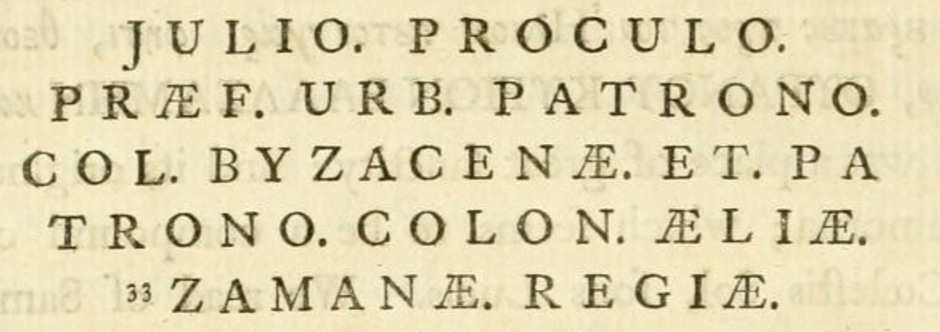Fresh Batch #176: Heavenly Lord Baalsamin, the Sun
Amonian Radicals: Shem, Shamen, Shemesh, Who is Ham.
Reminder: All articles can be listened to through the Substack app for those who don’t prefer to read.
Shem, Shamen, Shemesh.
Jacob Bryant wrote (Anal. Anc. Myth. pp. 64-5.), “Shem, and Shamesh, are terms, which relate to the heavens, and to the Sun, similar to שמש שמים ,שום (literal Old Synagogue transliteration: sms smim, sum; modern transliterations: shemesh shamayim, shum), of the Hebrews. Many places of reputed sanctity, such as Same, Samos, Samothrace (Samothraki), Samorna, were denominated from it. Philo Biblius informs us, that the Syrians, and Canaanites, lifted up their hands to Baal-Samen, the Lord of Heaven; under which title they honoured the Sun: Τας χειρας ορεγειν εις ουρανους προς τον Ήλιον τουτον γαρ, φησι, θεον ενμιζον μονον, ΟΥΡΑΝΟΥ ΚΥΡΙΟΝ ΒΑΑΛΣΑΜΗΝ καλουντες. (They raise their hands towards the Sun in the heavens, because Phisi, the one and only god, HEAVANELY LORD BAALSAMIN, is calling out to them. This is the very idea of being an ecclesiastic, or one who God as called out to or summoned. Philo apu Euseb. Præp. Evang. L. 1. c. 10.) Ephesus was a place of great sanctity: and its original name was Samorna (Setphanus Byzant.); which seems to be a compound of Sam-Oran, Cœlestis Sol, fons Lucis. (Heavenly Sun, source of Light.) We read of Samicon in Elis, χωριον Σαμικον (Samikon village; Pausanias. L. 5. p. 386.), with a sacred cavern: and of a town called Samia (Pausanias. L. 5. p. 387, 388.), which lay above it. The word Σεμνος (Semnos) was a contraction of Semanos, from Sema-on; and properly signified divine and celestial. Hence σεμναι θεαι, σεμνη κορα, semnai theai, semni kora, modest god(dess), modest daughter.) Ancient Syria was particularly devoted to the worship of the Sun, and of the Heavens; and it was by the natives called Shems and Shams: which undoubtedly means the land of Shemesh, from the worship there followed. It retains the name at this day.” (Abulfeda. Tab. Syriæ. P. 5. Syria Scham appellata. Dividitur Syria in quinque præfecturas, quarum unicuique nomine proprio nomen, Al Scham, scil. Syria is divided into five prefectures, each of which has its own name, Al Sham, for example. Syriæ, commune datur. Excerptum ex Ibn Ol Wardi. P. 176. Abulfeda supposes, that Syria is called Scham, quasi sinistra, as if on the left. It was called Sham for the same reason that it was called Syria. Συρος γαρ ό ήλιος, Syros, after the sun, the same as Σειριος, Sirius. Persæ Συρη Deum vocant. The Persians called God Syri/Suri. Lilius Gyraldus. Syntag. 1. p. 5. Συρια θεα, goddess Syria, i.e. Dea Cœlestis, Heavenly Goddess. Syria is called at this day Souristan. Souris from Sehor, Sol, Σειριος of Greece.)
The portion that jumped out at me is Persæ Συρη Deum vocant. The Persians called God Syri/Suri. According to Etruscologists, Suri is claimed to be the Etruscan Hades, or sun in winter, the same as Ham. However, it is difficult to find photos of inscriptions of Suri on the internet, but there are claims that all of these Etruscan epithets, including Aplu, Calu, Manth, Rath, Usil, Vetis, and Aita, etc. are different names of Suri. It may be an attempt to confound scholars and link these archetypes to so-called Semitic, or Persic, origin. If you look at the Wiki entry of Suri, there are tons of claims, including Suri being written on the Etrusco-Phoenician Pyrgi tablets (Adiego Lajara 2016, p. 155.), yet I don’t see Suri written anywhere on the tablets, nor do I see any photographic evidence of the name Suri being written in Etruscan on artifacts. Obviously, this source is modern, and quite frankly, this is the massive problem I come across time and time again: claims turning out to be total nonsense, with zero demonstration of how the conclusions were arrived at. There is so much information yet so little evidence to demonstrate it. What the hell is going on?
Bryant continued (Ib. pp. 65-6.), “In Canaan was a town and temple, called Beth-Shemesh (House of the Sun; I suspect this is nonsense, a confusion of astrotheology with history). What some expressed Shem and Sham, the Lubim (Libyans) seem to have pronounced Zam: hence the capital of Numidia was named Zama, and Zamana, from Shamen, Cœlestis. This we may learn from an inscription in Reineccius. (Reineccii Syntagma. Class. 6. cxxii. p. 458.)

“Ham being the Apollo of the east, was worshipped as the Sun; and was also called Sham and Shem. This has been the cause of much perplexity, and mistake: for by these means many of his posterity have been referred to a wrong line, and reputed the sons of Shem; the title of one brother not being distinguished from the real name of the other. Hence the Chaldeans have by some been adjudged to the line of Shem: and Amalek, together with the people of that name, have been placed to the same account. His genealogy is accordingly represented by Ebn Patric. (Ίστεον δε όι Χαλδαιοι απο του Σημ καταγονται, εξ ού και ό Αβρααμ. And the Chaldeans are descended from Shem, hence Abraham. Syncelli Chronograph. P. 98.) He makes him the son of Aad, and great grandson of Shem. Fuitque Aad filius Arami, filius Shemi, filius Noæ. Aad was the son of Aram, who was the son of Shem, who was the son of Noah. (Eutychii sive Ebn Patricii Hist. Vol. 1. p. 60.) The author of the Chronicon Paschale speaks of Chus, as of the line of Shem (Εκ της φυλης του Σημ Χους ονοματι, ό Αιθιοψ. Cush, also called Aithiops, was from the tribe of Sem. Chron. Paschal. p. 36.): and Theophilus in his treatise to Autolycus does the same by Mizraïm. (Έτερος δε ύιος του Σημ–ονοματι Μεστραεϊμ. Another son of Sem—named Mestraeim. Theophilus and Autolyc. L. 2. p. 370.) Others go farther, and add Canaan to the number. (Alii Shemi filium faciunt Canaanem. Relandi Palæstina. Others make Canaan the son of Shem. Returning to Palestine. Keep in mind that calling something a son of something meant, at one time prior to adjectives, likeness to that thing. V. 1. p. 7.) Now these are confessedly the immediate sons of Ham (The sons of Ham; Cush and Mizraim, and Phut, and Canaan. Genesis. c. 10. v. 6.): so that we may understand, who was properly alluded to in these passages under the name of Shem.”
Put, or Phut, could philologically be Pyth, which would make it one of the Amonian Radicals for the sun. Jacob Bryant did an amazing job, but he appears, thus far, to still accept and believe in the historicity of these stories, rather than recognizing they are astrotheological priestcraft, not merely historical men and locations named after the sun. There is more to learn from the stories by being able to recognize what portion of the year the sun, or these characters, are in. If any of this is unfamiliar to you, invest in the Spirit Whirled series to be brought up to speed, and then dive into The Real Universal Empire.







Become a member to access the rest of this article.
Keep reading with a 7-day free trial
Subscribe to Ancient History, Mythology, & Epic Fantasy to keep reading this post and get 7 days of free access to the full post archives.






